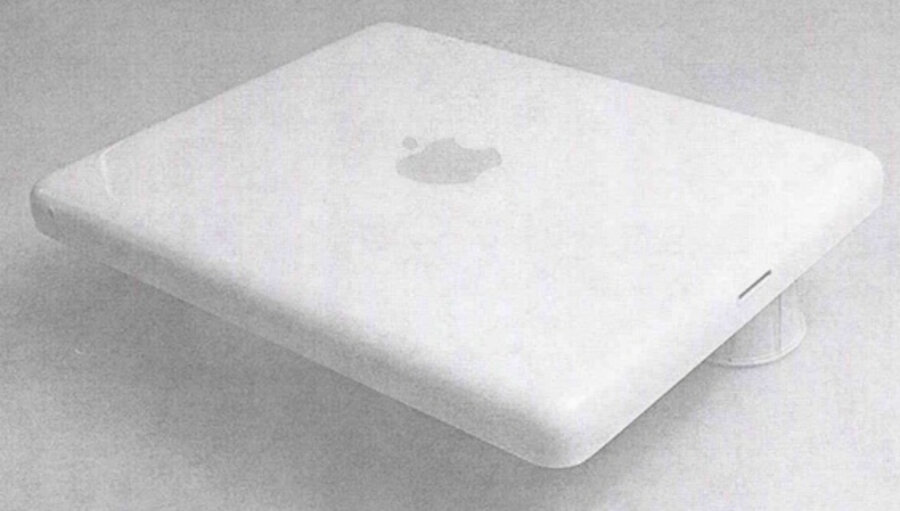A look at the original iPad prototype
Loading...
The iPad's appearance hasn't changed much since it was first introduced in 2010. Sure, the latest version has more power under the hood than the original, but the physical design has been more or less static. The iPad didn't just spring into existence as a 9.7-inch screen with a 4:3 aspect ratio and a home button; there had to be some earlier versions of the tablet that didn't make the cut, right?
Thanks to the ongoing patent disputes between Samsung and Apple, we've now got an idea of what the very earliest iPad mockup looked like. Tech site NetworkWorld uncovered some photos that were recently made public in a legal action, which show an early tablet model called "Prototype 035."
The device, created sometime between 2002 and 2004, is quite a bit taller and wider than the iPad we know today, and looks to be almost an inch thick. It's got a white plastic back that hearkens back to Apple's iBook line of laptops, and a headphone port on one corner. There's no home button, but the photos do show the now-ubiquitous 30-pin dock connector found on iPhones, iPads, and all but the earliest iPods. (The dock connector wasn't introduced until 2003, but Apple could've had the design nailed down in 2002, early enough to appear in this prototype.)
MSNBC notes that the photos were likely the basis for a tablet patent that Apple filed in March 2004. That means Apple was probably working on this proto-iPad before they shifted their focus to the iPhone. In a separate deposition, recorded in December 2011, Apple chief designer Jonathan Ive refers to the photos and says he remembers this prototype as "one of the models that we made as part of the design process, as part of the exploration."
For all its early-2000s clunkiness, it's remarkable how much Prototype 035 looks like the iPad we know today. There's the rounded edges, the black bezel surrounding the screen . . . even the familiar Apple logo centered on the back. It may have been intended to run a modified version of the Mac OS X desktop operating system, since iOS was still years away.
These photos help give context to some remarks Steve Jobs gave at the 2010 All Things D conference. At the time, he mentioned, "It began with the tablet. I had this idea about having a glass display, a multitouch display you could type on with your fingers." Jobs recounted having a semi-functional tablet in his hands and realizing, " 'My God, we can build a phone with this!' So we put the tablet aside, and we went to work on the iPhone."
We've now got a better sense of the design process that pushed Apple to pursue building its own phone before circling back around to the tablet years later.
Readers, what do you think about Prototype 035? Share your thoughts in the comments section below.
For more tech news, follow us on Twitter @venturenaut.






